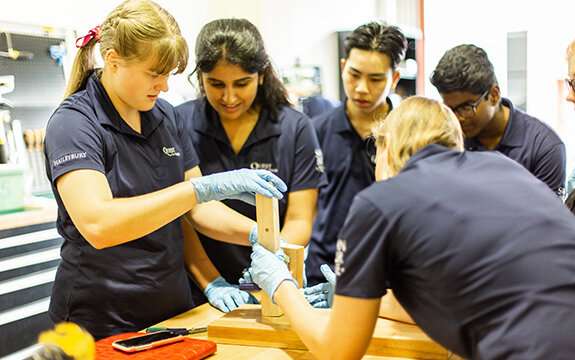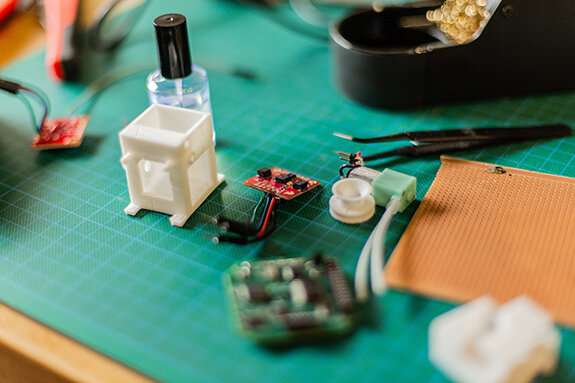Microcavity experiment heads to ISS

The second Swinburne Haileybury International Space Station Experiment (SHINE) launched from Wallops Island, Virginia in the US aboard an Antares rocket at 6.46am (AEST), to make its way to the International Space Station (ISS).
To celebrate this amazing achievement the SHINE team watched NASA's live broadcast of the blast off in the Virtual Reality Theatre at Swinburne's Hawthorn campus.
SHINE began in 2017, focusing on creating a hands-on experience where secondary students from Haileybury design, build and program their own experiment to learn more about microgravity conditions aboard the International Space Station (ISS).
"To help students with their vision, Swinburne mentors act as expert consultants and use their own knowledge to help complete advanced tasks," says Swinburne Space Project Coordinator Dr. Rebecca Allen.
"Swinburne staff manage the team and also provide use of cutting-edge facilities."
The focus of this year's experiment is on researching the effects of microgravity on tooth decay – a project the team of six Haileybury students came up with themselves.
Team Microcavity decided they wanted to try to recreate the human mouth environment inside a 12x5x5 centimetre container. "Not an easy feat," says Dr. Allen.
They put out a call to junior Haileybury students who were happy to supply baby teeth for the experiment.

The team designed the electrical components and software program that will drive the experiment in space.
After seven months of tests, trials and prototypes the experiment was sent to the US for prelaunch testing in February.
The experiment is one of around 24 experiments making the eight-hour journey to the ISS.
Astronauts at the ISS will initiate the experiments, which will remain at the ISS for 30 days, transmitting data to the SHINE team, before being returned to Earth for further testing.
Provided by Swinburne University of Technology




















